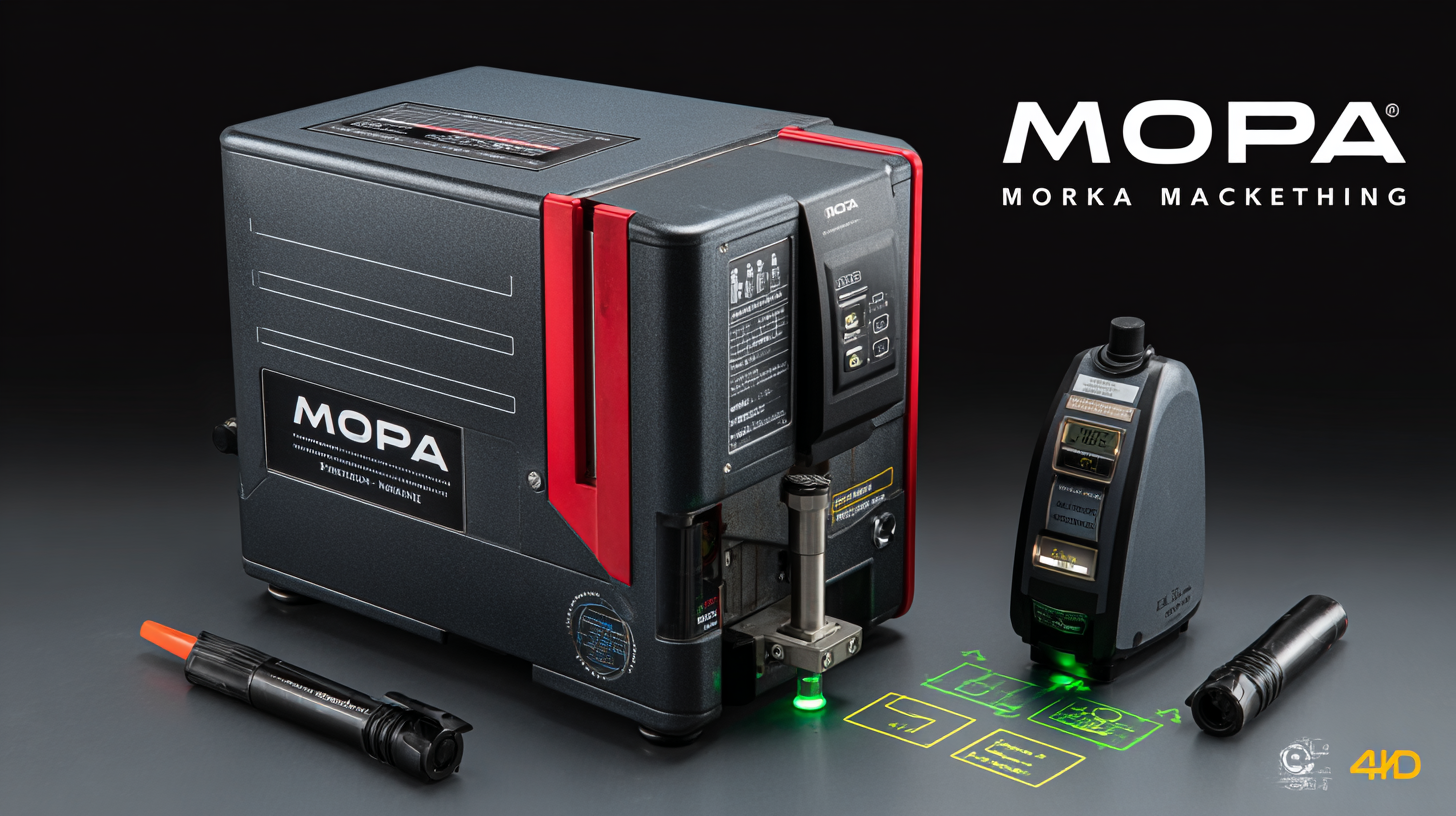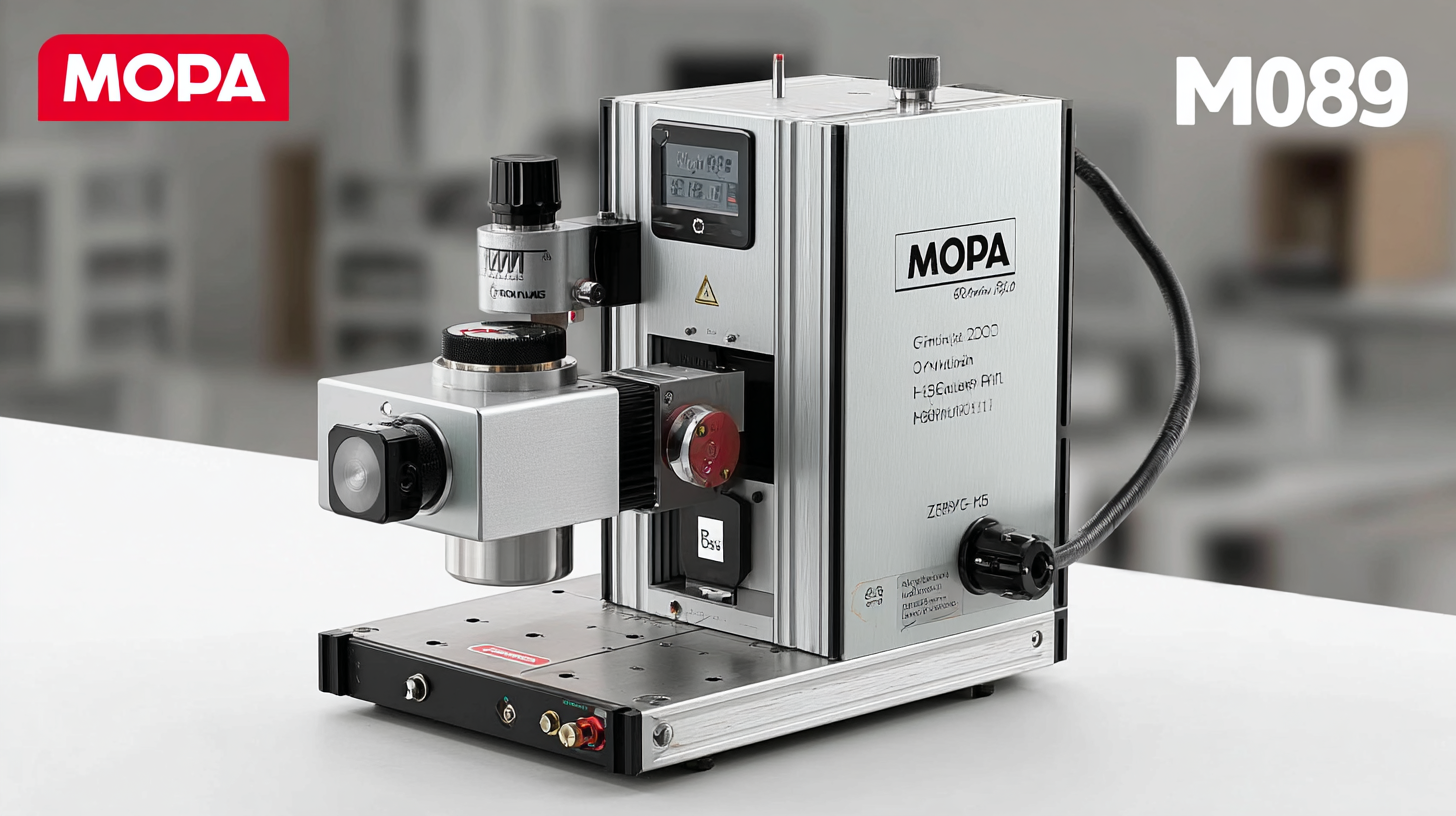
Exploring the Best Mopa Marking Machine Specifications and How to Choose the Right One for Your Needs
In the world of industrial marking and engraving, the Mopa Marking Machine stands out for its versatility and precision, making it a popular choice among manufacturers and artisans alike. As the demand for high-quality marking solutions continues to rise, understanding the specifications of various Mopa marking machines becomes critical to selecting the right one for your needs. This blog aims to explore the best Mopa marking machine specifications, highlighting key features that differentiate these machines in the market. Additionally, we'll delve into alternative types of marking machines, examining their pros and cons in comparison to Mopa technology. Whether you are looking to invest in a Mopa marking machine for the first time or seeking to upgrade your existing equipment, this guide will equip you with the knowledge to make an informed decision tailored to your specific applications.

Understanding the Key Features of Mopa Marking Machines for Various Industries
Mopa marking machines have become increasingly popular across various industries due to their versatility and precision. One of the key features to consider is the wavelength of the laser. Mopa systems typically operate at wavelengths of 1064 nm or 532 nm, allowing for better performance on different materials like metals, plastics, and ceramics. According to a report by MarketsandMarkets, the global laser marking market is expected to grow from $2.95 billion in 2020 to $4.77 billion by 2025, indicating a rising demand in sectors such as automotive, electronics, and medical devices. This growth underscores the importance of selecting a machine that can adapt to the specific needs of these applications.
Another critical component of Mopa marking machines is their pulse duration, which greatly affects the quality of the markings. Shorter pulse durations can achieve finer detail and are advantageous for delicate materials, while longer pulses are suitable for deeper engravings on tougher surfaces. A study by Research and Markets found that sophisticated features like variable pulse length and high peak power not only enhance engraving depth and speed but also improve operational efficiency, making Mopa machines an invaluable asset in industries requiring high-quality output. Therefore, it is essential to assess these specifications closely when choosing the right Mopa marking machine for your needs.
Understanding Mopa Marking Machines Specifications
This bar chart illustrates key specifications of Mopa marking machines, including laser power, marking speed, marking depth, weight, and price. These metrics help users evaluate and choose the right machine based on their specific needs in various industries.
Comparing Mopa Marking Machine Specifications: What Matters Most?
When it comes to selecting a Mopa marking machine, understanding the specifications is crucial for making the right choice. Key features to consider include the marking speed, pulse duration, and frequency. Marking speed directly affects productivity; faster machines can handle larger volumes of work without compromising quality. Pulse duration and frequency play vital roles in achieving precision and the depth of the engraving, particularly on various surfaces like metals, plastics, and ceramics.
Another important aspect to compare among different Mopa marking machines is their versatility and ease of use. Some machines come with advanced software that allows for intricate designs and customization, making them suitable for a wider range of applications. Additionally, look for user-friendly interfaces and robust customer support, as these can greatly enhance the overall experience, especially for beginners. By thoroughly evaluating these specifications, you can ensure that the Mopa marking machine you choose aligns perfectly with your operational needs and production goals.
Essential Factors to Consider When Selecting a Mopa Marking Machine
When selecting a Mopa marking machine, several essential factors come into play to ensure you choose the right model for your needs. First and foremost, the marking speed and depth are critical specifications. You should assess how quickly and deeply the machine can mark various materials, as this will impact your production efficiency. Consider the types of materials you will be marking, as certain machines are better suited for metals, plastics, or other surfaces.

Additionally, the machine's versatility should be on your checklist. Look for machines that offer adjustable settings for different marking techniques, such as engraving or ablation. This flexibility allows for a broader range of applications and increases the machine’s usability in different projects.
Tips: Always inquire about the machine's maintenance requirements. A machine that is easier to maintain can save you time and reduce downtime in your operations. Moreover, consider the availability of technical support and training, as having access to assistance can significantly enhance your overall experience with the machine.
The Impact of Laser Technology on Mopa Marking Machine Performance
The impact of laser technology on Mopa marking machine performance cannot be overstated. Mopa, which stands for Master Oscillator Power Amplifier, leverages advanced laser technology to deliver superior marking results compared to traditional fiber laser systems. This innovation allows for enhanced control over the pulse duration and energy output, enabling the machine to achieve finer, more precise markings on various materials without compromising their integrity. Users can expect consistent performance even on challenging substrates, such as plastics or anodized metals, where precision is vital.
Moreover, laser technology significantly expands the versatility of Mopa marking machines. With the ability to adjust parameters on-the-fly, operators can seamlessly transition between different marking processes, whether it be engraving, etching, or coding. This adaptability not only increases productivity but also allows businesses to meet diverse customer needs efficiently. As industries continue to evolve, the alignment of Mopa technology with cutting-edge laser advancements positions it as an essential tool for modern manufacturing, offering longevity and high-quality results that cater to a wide range of applications.
Exploring the Best Mopa Marking Machine Specifications and How to Choose the Right One for Your Needs - The Impact of Laser Technology on Mopa Marking Machine Performance
| Specification | Details | Impact of Laser Technology |
|---|---|---|
| Laser Type | Mopa Fiber Laser | High precision, versatility in materials |
| Wavelength | 1064 nm | Optimal for metal and polymer marking |
| Marking Speed | Up to 7000 mm/s | Increases productivity and efficiency |
| Output Power | 20W to 100W | Allows for deeper or finer engravings |
| Marking Area | 110 x 110 mm to 300 x 300 mm | Offers flexibility for various applications |
| Cooling Method | Air-Cooled or Water-Cooled | Ensures stable performance and longevity |
| Software Compatibility | Supports various design software | Enhances user experience and functionality |
Tips for Maintenance and Optimization of Your Mopa Marking Machine
When it comes to maintaining and optimizing your Mopa marking machine, regular upkeep is essential for ensuring long-lasting performance and quality results. Start with routine cleaning to prevent dust and residue buildup on the lens and other critical components. A clean machine not only functions better but also produces sharper, more precise marks on your materials. It’s advisable to use manufacturer-recommended cleaning agents and tools to avoid any damage.

Additionally, keep an eye on the machine’s settings and calibration. Adjustments might be necessary depending on the materials you're working with or the types of marks required. Regularly check the focus and alignment of the laser to maintain optimal marking quality. If your Mopa machine has software controls, ensure that the firmware is up to date, as updates can enhance performance and introduce new features. By thoughtfully managing both physical maintenance and software updates, you can achieve better operational efficiency and extend the lifespan of your Mopa marking machine.
